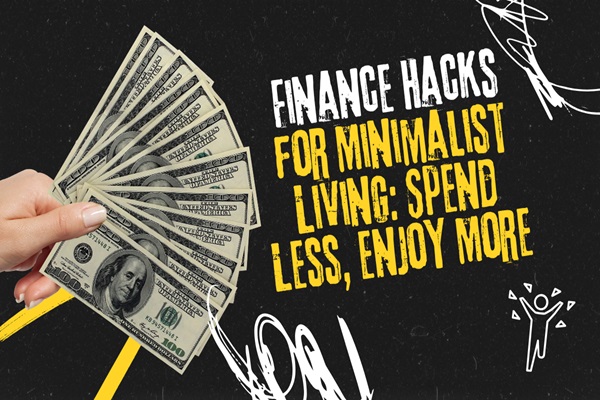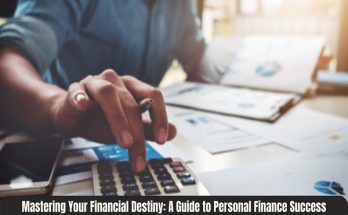Many people are interested in the concept of minimalism. It is a way of life that encourages simplicity, intentionality, and freedom from materialism; it is not only about clearing out your home or collecting less things. You may spend less money and have more fun with a minimalist attitude to money. This is a comprehensive guide to minimalist living that will help you achieve financial peace.

1. Understand Your Needs vs. Wants
In contrast, one of the bases of minimalism is defining needs and wants.
- Needs are those which will lead people to survive and thrive properly including food, shelter, good health care, and just basic clothing.
- Wants are those which make extra life but not necessarily basic, such as designer apparel, luxury automobiles, frequent dining out.
Question always before buying anything: Is this something that I do require, or it is temporary desire? This behavior limits any unnecessary spending.
2. Create a Budget According to Your Values
Minimalist living is all about aligning your spending with your core values. To do this:
- Identify what really matters to you (family, experiences, health).
- Budget accordingly and prioritize these areas while cutting out unnecessary expenses.
A minimalist budget should be simple and easy to follow. Use tools like the 50/30/20 rule:
- 50% for essentials.
- 30% for discretionary spending.
- 20% for savings and debt repayment.
3. Declutter Your Finances
Just like you declutter your physical space, declutter your financial life:
- Consolidate accounts: You only need one or two bank accounts to avoid confusion.
- Cancel subscriptions: Eliminate unused subscriptions or memberships.
- Automate payments: Set up automatic bill payments to avoid late fees.
Decluttering reduces stress and makes managing money easier.
4. Accept the Challenge of “No-Spend”
A “no-spend” challenge is a short-term promise to avoid buying anything extra.
Duration: You can choose a week, month, or year for the period.
Focus: Spend only on essentials like rent, utilities, and groceries.
Benefits: It also helps you in saving money, learning what to appreciate from what you have, and improving your expenditure habits.
5. Quality Over Quantity
Cheap does not mean minimalist. It is about intentionality. Even though it will cost more initially, they survive longer and thus is worth it in the long run.
- Invest in long-term clothing, appliances, and furniture.
- In supermarket shopping, the same applies: choose whole foods with a high nutrient content over packaged items.
6. Implement the Capsule Wardrobe
A capsule wardrobe is a very small assortment of versatile, timeless clothing that can be combined.
- Savings in money, time, and space.
- Stick to neutral colors and avoid trendy pieces that go out of style quickly.
7. Mindful Spending- Practice
Before you take something home, stop and ask,
- Do I already have something for this?
- Will this change my life in some very lasting way?
- How will I use this?
This mindfulness avoids impulse purchases and ensures every purchase fulfills a need.
8. Downsizing and living simplification
For most people, one of the largest single expenses during their lifetime comes in terms of housing; reduce your house or apartment in size so that it makes sense with no wasted room.
- Benefits: Reduced rent or mortgage, reduced utilities, and less time cleaning.
- Share living spaces or co-living for increased savings.
9. Cash or Debit instead of Credit
Relying on credit cards can lead you to overspend and be in debt.
- Use cash or debit for all your daily purchases
- This way, you become more aware of money flowing out of your hands; you become more careful.
Pay the balance in full every month if you use credit cards to avoid interest charges
10. DIY When Possible
Do it yourself and save money on home repair, cooking meals, among other things.
- Learn basic sewing, gardening, and prepping meals.
- You will save on labor costs and feel accomplished.
11. Reduce Social Media Impact
Social media tends to push us to spend money on trendy products or experiences we do not need.
- Unfollow accounts that promote materialism.
- Follow minimalist creators for inspiration.
12. Experiences over Things
In minimalism, experience is valued over material. Instead of letting your money go to some new gadget, spend it on experiences that will make memories.
- Go for a hike, attend a community event, or learn a new skill.
- Most enriching experiences are free or inexpensive.
13. Save with Purpose
One of the marks of financial minimalism is saving money. Set your goal, be it for an emergency fund, debt paydown, or dream vacation.
- Automate monthly savings transfers.
- High-yield savings accounts help to grow money faster.
14. Sell Unwanted Items
Decluttering your home can also be a source of income.
- Sell the old clothes, electronics, or furniture that you don’t use anymore.
- Sell through websites such as eBay, Facebook Marketplace, or Poshmark.
This helps you make money while practicing minimalism.
15. Utilize Technology for Savings
There are several apps and websites that will save you money:
- Budgeting apps: Mint, YNAB (You Need a Budget).
- Coupon apps: Honey, Rakuten.
- Price comparison websites: Google Shopping, CamelCamelCamel
16. Be Grateful Every Day
Being thankful for what you have will reduce the wants.
- Start a gratitude log to write about nonmaterial blessings.
- This mindset of gratitude leads to more comfort and less spending.
17. Develop a Simple Meal Plan
A simple meal plan can save money for food quickly:
- Cook dinners at home instead of in restaurants.
- Use seasonal ingredients and buy them in bulk.
- Use ingredients repeatedly and freeze leftovers to avoid food waste.
18. Leverage Second-Hand Stores
All these – online markets, consignment shops and thrift stores- sell goods at a much cheaper cost.
- You will not only save money but also contribute to a sustainable way of living.
19. Health is Wealth
You will be investing in your health. In the long run, you will be saving money from not spending it on costly medical procedures.
- Get enough rest, eat healthy, and exercise frequently.
- Reduce stress and be mindful and observe your mental health.
20. Appreciate the Small Wins
To be a minimalist doesn’t mean to be perfect by next week or next year but a process. Have patience and appreciate small success by saving money for a goal in question or avoiding an unnecessary expense.
21. Use Minimalist Marketing Strategies
For companies, minimalist marketing is all about efficiency and cost savings:
- Focus on High-ROI Channels: Concentrate on one or two effective platforms instead of spreading resources thin.
- Leverage Organic Marketing: Invest in content marketing and SEO for sustainable growth.
- Content reuse: Maximize reach on the basis of reuse with multiple formats, such as blogs, social media and videos.
- Free marketing tool usage: Use Canva, HubSpot, or Mailchimp for free in regard to marketing.
- Simplifying messages: Clear and concise is where your message should be.
- Partnering with micro-influencers: Partner only with those influencers who ask cheap.
These strategies help streamline your marketing efforts while saving money and time.
Conclusion
The life of a minimalist does not mean deprivation but an intentionally focused life on the real importance. Applying these hacks helps to save money, minimize the stress, and actually achieve a more fulfilling life. Start small, be constant, and see the differences for yourself as minimalist habits alter your financial well-being and happiness.



